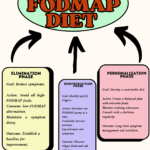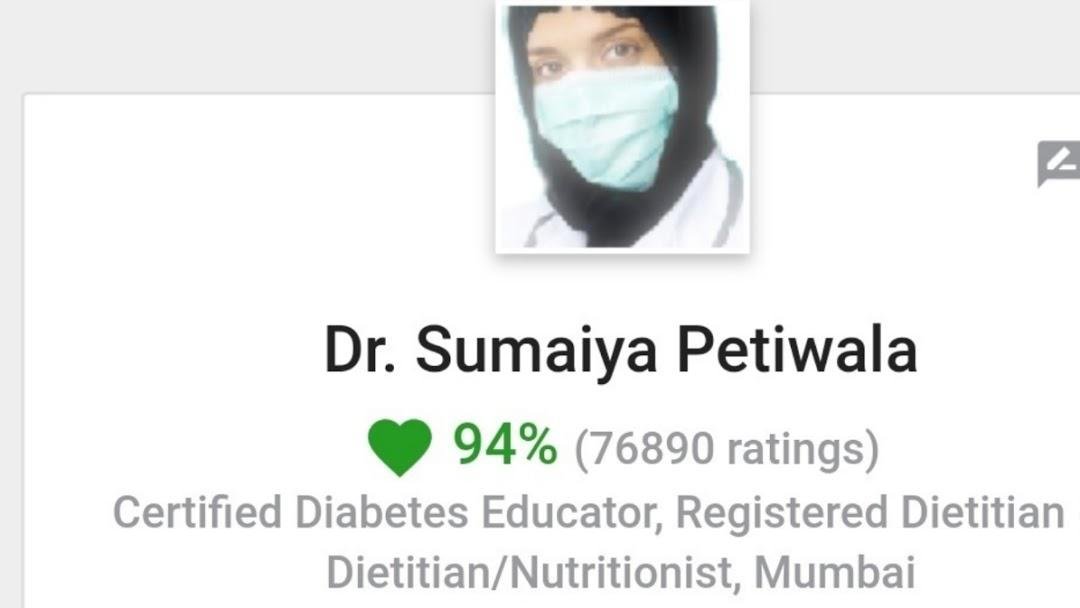Welcome to Dr. Sumaiya’s NutriCare Clinic’s guide on meal sequencing. Discover practical tips for your health journey.
Meal Sequencing: The Ultimate Guide to Better Digestion & Blood Sugar Control
Table of Contents
- What is Meal Sequencing?
- Why is Meal Sequencing Important?
- The Ideal Meal Sequence
- Scientific Evidence Supporting Meal Sequencing
- Practical Meal Sequencing Examples
- Who Can Benefit from Meal Sequencing?
- The 20-Minute Rule and Meal Sequencing
- Key Takeaway
- Frequently Asked Questions
- References
What is Meal Sequencing?
Meal sequencing is a dietary strategy that involves eating food groups in a specific order to maximize positive health outcomes. It’s not about *what* you eat, but *when* you eat it within a meal. This simple yet powerful technique can influence digestion, nutrient absorption, blood sugar levels, and even your feeling of fullness.
Why is Meal Sequencing Important?
- Improves Glycemic Control: The order in which you eat different food groups significantly impacts your post-meal blood sugar levels. Eating fiber and protein before carbohydrates helps slow down the absorption of glucose into your bloodstream.
- Enhances Satiety: Starting your meal with fiber-rich vegetables and then protein helps you feel fuller for longer, reducing the likelihood of overeating.
- Optimizes Nutrient Absorption: Certain nutrients are better absorbed when paired with others or consumed in a particular sequence.
- Reduces Insulin Spikes: A more controlled release of glucose into the bloodstream helps prevent large insulin spikes, which can contribute to insulin resistance over time.
- Supports Gut Health: Starting with fiber and ending with fermented foods (optional) can promote a healthy gut microbiome.
The Ideal Meal Sequence
- Start with Fiber (Vegetables & Salads):
- Why? Fiber slows down gastric emptying (the rate at which food leaves your stomach) and reduces the subsequent glucose spike after a meal.
- Examples: Leafy greens (spinach, lettuce, kale), cruciferous vegetables (broccoli, cauliflower, cabbage), cucumber, carrots, bell peppers.
- Effect: Fiber forms a gel-like layer in the intestines, slowing down the absorption of carbohydrates and promoting a more gradual rise in blood sugar.
- Follow with Protein & Healthy Fats:
- Why? Protein and fats further enhance satiety (the feeling of fullness) and continue to slow down glucose absorption. They also stimulate the release of hormones that regulate appetite.
- Examples: Eggs, fish (salmon, tuna, mackerel), chicken, lean meats, paneer, tofu, lentils, beans, nuts, seeds, olive oil, avocado.
- Effect: Reduces post-meal cravings, maintains stable blood sugar levels, and provides essential amino acids and fatty acids.
- Eat Carbohydrates Last:
- Why? By delaying carbohydrate intake after fiber and protein, you minimize the glucose spike that typically occurs after eating carbs.
- Examples: Rice, roti, chapati, bread, potatoes, pasta, quinoa, other whole grains.
- Effect: Leads to a slower and more gradual release of glucose into the bloodstream, promoting better blood sugar control and preventing energy crashes.
- End with Fermented Foods (Optional):
- Why? Fermented foods contain beneficial bacteria (probiotics) that support gut health and digestion.
- Examples: Yogurt, buttermilk, kefir, kimchi, sauerkraut, kombucha (choose low-sugar varieties).
- Effect: Enhances microbiome health, may improve insulin sensitivity, and aids in overall digestion.
Scientific Evidence Supporting Meal Sequencing
Numerous studies have demonstrated the benefits of meal sequencing:
- A 2015 study published in *Diabetes Care* found that eating vegetables and protein *before* carbohydrates resulted in significantly lower post-meal glucose spikes (30-40% lower) compared to eating carbohydrates first. This highlights the impact of food order on blood sugar control.
- Research in the *Journal of Clinical Endocrinology & Metabolism* showed that meal sequencing improves the levels of satiety hormones like GLP-1 (glucagon-like peptide-1) and reduces ghrelin, the hormone that stimulates hunger. This means you feel fuller and more satisfied after your meal.
- A 2019 study in *BMJ Open Diabetes Research & Care* confirmed that eating vegetables before carbohydrates significantly improved postprandial glucose and insulin levels in people with type 2 diabetes.
- Further research supports the role of meal timing and sequence in weight management. A study published in *Obesity* (2022) indicated that consuming the majority of daily calories earlier in the day, combined with strategic meal sequencing, can aid in weight loss efforts.

Practical Meal Sequencing Examples
Here are some practical examples to help you implement meal sequencing in your daily life:
Indian Meal Example:
- Start with a bowl of vegetable salad (cucumber, tomato, lettuce, onions, carrots).
- Eat your protein source (dal/lentils, paneer/cottage cheese, chicken, fish) and healthy fats (a small amount of ghee or nuts).
- Consume carbohydrates like chapati/roti or rice last.
- Finish with a small serving of buttermilk or yogurt (optional).
Western Meal Example:
- Begin with a bowl of sautéed greens (spinach, kale) or a raw salad with a light vinaigrette.
- Have your protein source (grilled salmon, chicken breast, lean steak, tofu) with a healthy fat source (olive oil dressing, avocado).
- Eat your carbohydrates (quinoa, pasta, whole-wheat bread, sweet potato) last.
- End with a small serving of plain yogurt or kefir (optional).
Who Can Benefit from Meal Sequencing?
- People with diabetes or insulin resistance: Meal sequencing is particularly beneficial for managing blood sugar levels and improving insulin sensitivity.
- Individuals seeking weight management: By enhancing satiety and controlling blood sugar, meal sequencing can help with weight loss or maintenance.
- People with digestive issues: The order of food consumption can impact digestion, and meal sequencing may help alleviate symptoms like bloating or indigestion.
- Anyone looking for stable energy levels: By preventing large blood sugar fluctuations, meal sequencing can help maintain consistent energy throughout the day.
- Individuals with PCOS: Polycystic Ovary Syndrome (PCOS) often involves insulin resistance. Meal sequencing can be a valuable tool in managing PCOS symptoms.
The 20-Minute Rule and Meal Sequencing: A Powerful Combination
The 20-minute rule is based on the physiological fact that it takes approximately 20 minutes for your brain’s satiety center (hypothalamus) to register fullness after you start eating. This delay is due to the time it takes for satiety hormones, like leptin, cholecystokinin (CCK), and GLP-1, to be released and signal your brain that you’ve had enough.
How the 20-Minute Rule Connects with Meal Sequencing
- Eating Slowly Enhances Satiety: When you follow the meal sequence (fiber → protein → carbs) and eat slowly, taking at least 20 minutes, your brain has ample time to process the satiety signals *before* you reach the carbohydrate portion of your meal. This helps prevent overconsumption of carbohydrates, leading to better blood sugar control and weight management.
- Chewing More = Better Hormone Response: Thorough chewing increases saliva and digestive enzyme production, improving nutrient absorption. Slow eating also enhances the release of GLP-1 and PYY, hormones that suppress hunger and increase feelings of fullness.
- Reduces Post-Meal Cravings: Eating quickly often leads to blood sugar spikes and crashes, increasing cravings for sugary and processed foods. The combination of the 20-minute rule and meal sequencing helps maintain stable blood sugar levels, preventing these energy crashes and reducing cravings.
How to Apply the 20-Minute Rule
- Put down your fork or spoon between bites.
- Chew each bite thoroughly (aim for 15-20 chews) before swallowing.
- Engage in mindful eating – avoid distractions like TV, phones, or computers. Focus on the taste, texture, and smell of your food.
- Drink water slowly during your meal (if desired).
- Use a timer or eat with company to naturally slow down your eating pace.
- Practice mindful eating techniques, such as paying attention to your body’s hunger and fullness cues.
Key Takeaway
Combining meal sequencing with the 20-minute rule is a powerful, evidence-based strategy to control appetite, improve digestion, stabilize blood sugar levels, and enhance overall well-being. It’s a simple yet effective approach that can benefit a wide range of individuals, particularly those with diabetes, insulin resistance, or weight management goals.
Would you like a personalized meal plan based on your eating habits and metabolic needs?

Take Action for Better Health!
Ready to take control of your health and experience the benefits of meal sequencing? Dr. Sumaiya offers personalized consultations to create a tailored plan that meets your specific needs and goals.
Start Your Consultation Here!Frequently Asked Questions (FAQs)
- Q: Do I have to follow meal sequencing at every meal?
A: While consistency is beneficial, even incorporating meal sequencing into some of your meals can make a difference. Start with one meal a day and gradually increase as you become more comfortable. - Q: Can I eat fruit with my meal?
A: It’s generally recommended to eat fruit *before* your meal or as a separate snack. Fruit contains fructose, which is processed differently than glucose. Eating it before other foods can help minimize any potential blood sugar spikes. - Q: What if I have dietary restrictions?
A: Meal sequencing can be adapted to various dietary needs, including vegetarian, vegan, gluten-free, and dairy-free diets. The key principles remain the same: prioritize fiber and protein before carbohydrates. - Q: I often feel hungry soon after eating. Will meal sequencing help?
A: Yes, meal sequencing can significantly improve satiety. By eating fiber and protein first, you’ll feel fuller for longer, reducing the likelihood of feeling hungry soon after your meal. This is because fiber and protein slow down digestion and promote the release of satiety hormones. - Q: I’ve noticed a difference in satiety when eating slowly vs. quickly. Why is that?
A: Eating slowly gives your body time to register fullness. It takes about 20 minutes for your brain to receive signals from satiety hormones. When you eat quickly, you bypass this natural process and are more likely to overeat before feeling full. - Q: Can you give me specific tips on mindful eating for better digestion and weight control?
A: Certainly! Here are some mindful eating tips:- Eat without distractions: Turn off the TV and put away your phone.
- Pay attention to your food: Notice the colors, smells, textures, and tastes.
- Chew thoroughly: Aim for 15-20 chews per bite.
- Put your utensil down between bites: This helps you slow down.
- Listen to your body: Eat when you’re hungry and stop when you’re comfortably full.
For personalized guidance and a customized meal plan, consider scheduling a consultation with Dr. Sumaiya.
Book Your Consultation Today!References
- Shukla, A. P., Iliescu, R. G., Thomas, C. E., & Aronne, L. J. (2015). Food order has a significant impact on postprandial glucose and insulin levels. *Diabetes Care*, *38*(7), e98-e99.
- Alpana P. Shukla, Radu G. Iliescu, Catherine E. Thomas, Louis J. Aronne; (2017). Eating vegetables before carbohydrates improves postprandial glucose and insulin levels in people with type 2 diabetes, *Journal of Clinical Endocrinology & Metabolism*, Volume 102, Issue 7, 1 July 2017, Pages 2329–2334.
- Imai, S., Fukui, M., & Kajiyama, S. (2019). Effect of eating vegetables before carbohydrates on glucose excursions and postprandial hypertriglyceridemia. *BMJ Open Diabetes Research & Care*, *7*(1), e000693.
- Jakubowicz, D., Froy, O., Wainstein, J., & Boaz, M. (2022). Meal timing and frequency: implications for cardiovascular disease prevention: A scientific statement from the American Heart Association. *Circulation*, *145*(5), e96-e113.
- Kahleova, H., Lloren, J. I., Mashchak, A., Hill, M., & Fraser, G. E. (2017). Meal Frequency and Timing Are Associated with Changes in Body Mass Index in Adventist Health Study 2. *The Journal of Nutrition*, *147*(9), 1722-1728.




